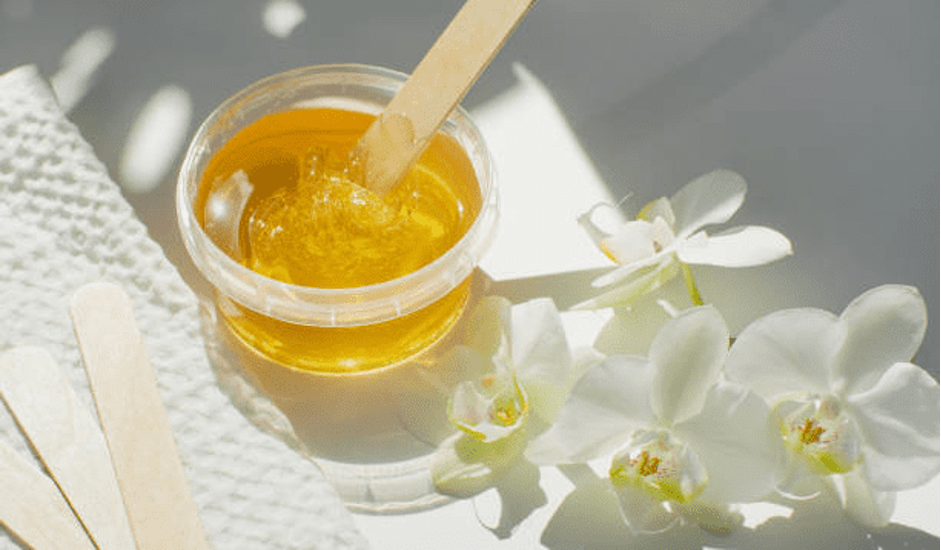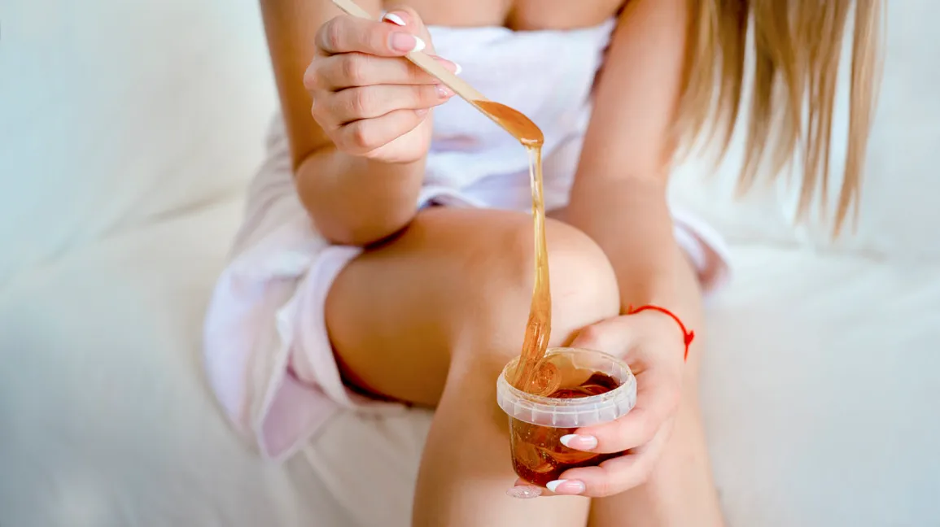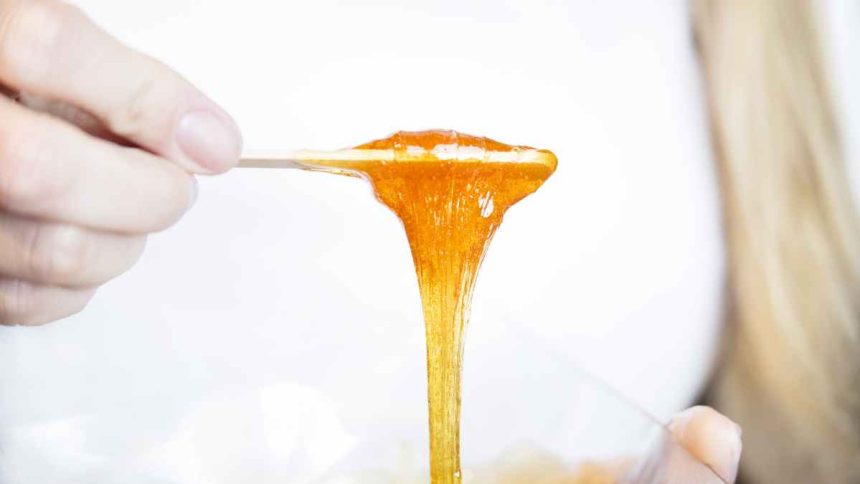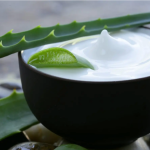Waxing and sugaring are the most popular methods for removing unwanted hair. Both of these depilation methods have their fans. If you have not yet decided whether sugaring wax vs hard wax is better, look through the information below.

Main Features of Sugaring
Sugaring is a hair removal technique that utilizes a unique sticky paste. Curious about sugar paste waxing? It’s a product crafted from sugar, citric acid, and purified water. Unlike traditional wax, the sugar paste solely clings to the hair and dead skin cells, reducing discomfort by avoiding unnecessary adhesion to the skin.
Sugaring can effectively remove shorter hairs, as the sugar paste can adhere to shorter hair lengths more effectively. The procedure is often considered a gentler option for those people with sensitive skin. The natural ingredients used in sugaring are less likely to cause irritation or allergic reactions compared to some waxes.
Considering wax vs sugar, note that both techniques can provide similar results in terms of hair removal longevity, with hair regrowth expected within 2-6 weeks on average.
Main Features of Waxing
When comparing waxing vs sugaring, wax depilation can be a relatively quick process, especially for larger areas like legs or arms. The composition is applied and removed in one swift motion, making it efficient for those with busy schedules. Usually, technicians apply the substance using a spatula or roller and remove it with strips or by pulling it off. Some individuals may find this hair removal technique to be more painful compared to sugaring, as the wax adheres to both the hair and the skin when removed. But this can be different depending on a person’s pain tolerance.
Sugaring or Waxing: the Most Important Differences
Sugaring vs hard wax are both hair removal methods, but they have some important differences:
- Waxing involves applying a hot or cold substance to the skin, allowing it to harden, and then removing it along with the hair. Sugaring uses a sticky paste at room temperature.
- Waxing involves a substance that can be created using different ingredients such as beeswax, resin, and oils. On the other hand, sugar paste is made solely from natural elements like sugar, lemon juice, and water.
- The wax for depilation should be heated and then applied to the skin using a spatula or roller. It is then covered with a strip of cloth or paper and firmly pressed before being pulled off in the opposite direction of hair growth. Sugar paste can be applied with the hands in the direction of hair growth and then flicking it off in the opposite direction.
- The pain experienced during sugaring vs waxing for coarse hair can vary depending on an individual’s pain tolerance. However, many people find that sugaring is less painful than waxing.
- Sugaring is typically done at room temperature while waxing often involves using hot products, which can increase discomfort.
- Both techniques require a certain length of hair for effective removal. However, sugaring can remove shorter hairs than waxing.
- Sugaring is often considered a gentler option. The natural ingredients used in sugar paste are less likely to cause irritation or allergic reactions compared to the chemicals and resins found in some waxes.

What to Choose: Sugaring or Waxing
Recently, more and more women are beginning to prefer sugaring instead of waxing for several reasons:
- Sugaring is often considered to be less painful compared to wax depilation.
- High-quality sugar paste is typically made from all-natural ingredients such as sugar, lemon juice, and water. This can be appealing to individuals who prefer to use products without minimal chemicals or additives.
- The sugar paste acts as a natural exfoliant, gently removing dead skin cells as it is applied and removed. This can give the feeling of smoother and softer skin after the hair removal process.
- The natural ingredients used in the sugar paste are less likely to cause allergic reactions or skin irritations.
- Unlike wax, which needs to be heated before application, sugar paste can be applied at room temperature. This reduces the risk of burns or discomfort caused by hot substances.
- Sugar paste can be easily cleaned up with water, as it is water-soluble. This makes the cleanup process quicker and less messy compared to waxing.
- Some people claim that sugaring can lead to slower hair regrowth compared to waxing. This may be because sugaring removes hair in the direction of growth, which can help weaken the hair follicle over time.
What Determines the Quality of Sugaring?
Using a high-quality sugar paste, such as those from Sugaring Factory, can ensure a more effective and efficient hair removal process. The consistency of the paste can make a difference in how well it adheres to the hair and removes it from the root.
Sugaring Factory is a well-known manufacturer of hair removal cosmetics. The company specializes in producing products that are effective, efficient, and gentle on the skin. The manufacturer prides itself on using natural ingredients in the formulations, ensuring a safe and non-irritating experience for the customers.
One of the key factors that sets Sugaring Factory apart is the commitment to creating professional sugar pastes with the perfect consistency and texture. This is crucial for achieving optimal hair removal results. The paste needs to be soft enough to spread easily on the skin, but also firm enough to adhere to the hair and remove it from the root. Sugaring Factory has mastered this balance, allowing for more thorough and long-lasting hair removal results.
The sugar pastes from Sugaring Factory are made using a traditional recipe that has been perfected over time. The paste is also easy to work with, making it suitable for professionals who want to stay in the beauty business for a long time offering better service to their clients.
All these facts and more than 7 years of experience make Sugaring Factory a reputable manufacturer. The company products are trusted by professionals and individuals alike, making them a popular choice for effective and efficient hair removal.
Lynn Martelli is an editor at Readability. She received her MFA in Creative Writing from Antioch University and has worked as an editor for over 10 years. Lynn has edited a wide variety of books, including fiction, non-fiction, memoirs, and more. In her free time, Lynn enjoys reading, writing, and spending time with her family and friends.















